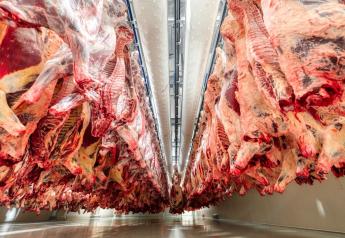USDA Simplifying Vaccine Labels

For years, the USDA has used a “tiered” system for claims on vaccine labels, which added complexity to pre-license trials and tended to create confusion for users.
During the recent Academy of Veterinary Consultants (AVC) Spring Conference in Omaha, South Dakota State University veterinarian Chris Chase outlined how moving to a single-tiered system, similar to that FDA uses for human vaccines, could make the approval process more efficient while still providing producers and veterinarians the information they need to make vaccine decisions.
Industry groups have pushed for a single-tiered system since around 2002, and USDA published a final rule in 2015. USDA released guidelines in 2018, and the single-tiered system now appears on new vaccine labels.
The tiered system included four levels of efficacy claims:
- For prevention of infection.
- For prevention of disease.
- To aid in prevention of infection.
- To aid in control and reduction of disease.
The new system replaces those tiers with a single clam for efficacy of the product. Sponsors still, however, need to demonstrate product safety, and publish pertinent trial data to secure FDA licensure for a new vaccine. USDA’s Animal and Plant Health Inspection Services has begun publishing summary reports on its Licensed Veterinary Biological Product Information website.
Chase says this system should help streamline the vaccine approval process while making labels easier to understand. Anyone interested in more detailed data, along with trial methodology, can visit the website. He also notes that the research summaries on the USDA/APHIS website support the label claims for efficacy, and not marketing information such as head-to-head comparisons of competing vaccines.
For related information on vaccine research, see these articles on BovineVetOnline:
- The Art of Custom Vaccines
- Self-Amplifying RNA Vaccine Platform Could Speed Response
- Timing for Feeedyard Vaccines







